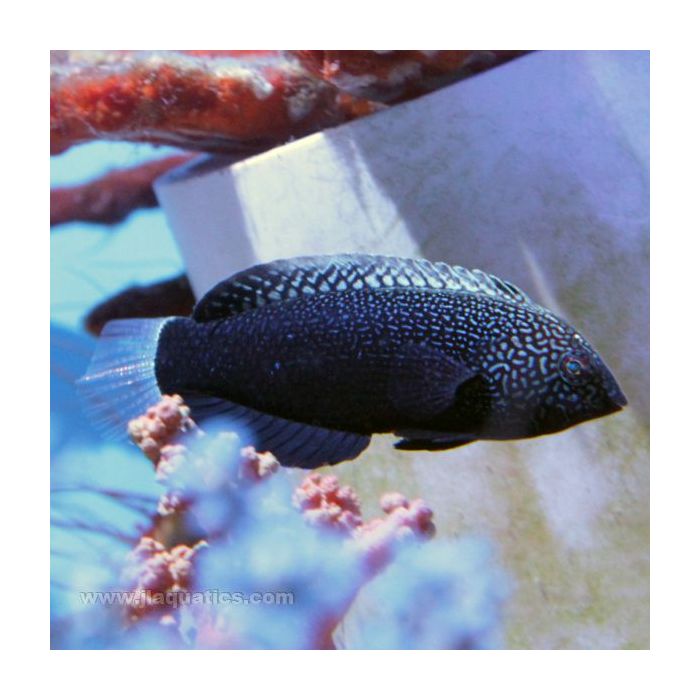Black Leopard Wrasse (Asia Pacific)
Wrasses are prone to jumping from the aquarium when startled or excited so we recommend a secure lid. They feel most secure when there is plenty of live rock to hide in, as well as open space for swimming. Most species may be kept in pairs or harems as long as they are added together or females first. They do not appreciate living with other species of wrasse, so any aquarium with several species must be large enough and the most peaceful species added first.
They should be fed two to three times a day plenty of high quality meaty items, frozen Mysis shrimp, krill, chopped seafood, marine algae and Spirulina.
These wrasses have active personalities and appreciate plenty of rockwork as well as open space to swim. They may eat small invertebrates, especially shrimp, but do not bother corals or anemones. Due to their relatively shy demeanor they should not be kept with aggressive tank mates. They have very small mouths and may be difficult to feed, so frequent feedings of a wide variety of foods should be offered thorough the day. We only recommend this species for experienced aquarists. They are coral safe, but larger individuals may attack small invertebrates such as shrimp, snails, urchins, worms, bivalves and serpent stars.
br />At night time or when threatened these wrasses will dive into the sand for protection. They can even swim under the sand to avoid predators. It is not uncommon to find the wrasse laying on top of the sand to rest during the day. A fine sand bed of at least 2-3 inches will help them feel secure. Rocks should be placed on the aquarium glass and sand poured around them to eliminate the danger of a cave-in when the wrasse dives in.
An incredible beauty, the Black Leopard wrasse is a velvety black and shimmers blue in the light. Countless tiny speckles are sprinkled over its back and head. These dots are a subtle white to cream when young, giving it another common name, the Yellow Spotted wrasse. Speckles are more white to blue on mature fish, and are larger and diamond shaped on males; smaller and becoming more numerous on the backs of females. Males will have distinct black on the outer tail margins while females and juveniles tails are transparent. It grows to 4.5 inches and needs an aquarium of at least 70 gallons.
















